Europe in Turmoil | History - Rise of Socialist Ideas and Birth of Communism | 12th History : Chapter 12 : Europe in Turmoil
Chapter: 12th History : Chapter 12 : Europe in Turmoil
Rise of Socialist Ideas and Birth of Communism
Rise of Socialist Ideas and Birth of Communism
Socialist ideas in the modern sense came to be
articulated by the Physiocrats or the economists who were making enquiries into
the production and distribution of food and goods. Étienne-Gabriel Morally, the
Utopian thinker, in his Code de la Nature
(1755), denounced the institution of private property and proposed a
communistic organisation of society. He was the precursor of various schools of
collectivist thinkers in the nineteenth century who are categorised as
Socialists. Francois Babeuf, a political agitator of the French Revolutionary
period, felt that the Revolution in France did not address the needs of the
peasants and workers, and argued in favour of abolition of private property and
for common ownership of land.
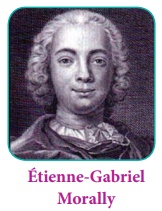
Utopian Socialism
The earliest socialists in Europe were not
revolutionaries. They proposed idealistic schemes for cooperative societies, in
which all would work at their assigned tasks and share the outcome of their
common efforts. The term “Utopian Socialism” was first used by Karl Marx and
Friedrich Engels to describe the ideas articulated by the socialists before
them. Utopian Socialists recommended the establishment of model communities,
where the means of production would be collectively owned. They promoted a
visionary idea of a socialistic society, devoid of poverty or unemployment.
Their influence led to the establishment of several hundred model communes
(communities) in Europe and USA. Claude- Henri Saint -Simon,
Francois-Marie-Charles Fourier and Robert Owen were some of the prominent
Utopian Socialists.
Claude Henri Saint-Simon (1760–1825)
Saint Simon was a French aristocrat who fought
against the British in the American War of Independence. A strong believer in
science and progress, he criticised contemporary French society for being in
the grip of feudalism. Saint-Simon suggested that scientists take the place of
priests in the social order. He expressed the view that property owners who
held political power could hope to maintain themselves against the propertyless
only by subsidising the advance of knowledge. In his book called New Christianity he advocated the
adoption of the Christian principle of concern for the poor.
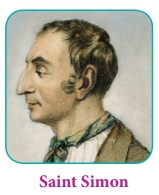
Charles Fourier (1772–1837)
Fourier was An early Utopian Socialist. He believed
that social conditions were the primary cause of human misery. Social and economic
inequality could be overcome if everybody had the basic minimum. Fourier
believed in the goodness of human nature and rejected the dogma of “original
sin”. He saw harmony as the law of the cosmos and held that what is true for
nature must be true for society. He envisaged a harmonious self-contained
co-operative society called phalansteres.
It was a community where there would be equal distribution of profit and loss.
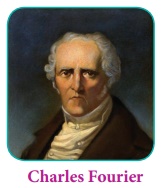
Robert Owen (1771–1858)
Among the factory owners of Manchester there was a
humanitarian by name Robert Owen. Shocked by the condition of the factory
workers, he introduced many reforms in his own factories and improved the
condition of the workers. He did not employ children below the age of 10 in his
industries. Later he criticised private property and profit. He began to
advocate the new establishment of cooperative communities that would combine
industrial and agricultural production. In his book A New View of Society (1818),
he advocated a national education
system, public works for the unemployed and reform of the Poor Laws. Thanks to
his efforts, the British Parliament passed the Factory Act of 1819. By the
mid-1820s Owen had developed a theory of Utopian Socialism based on social
equality and cooperation. His other initiatives included formation of the Grand
National Consolidated Trades Union (1834) and the Cooperative Congresses
(1831-1835).
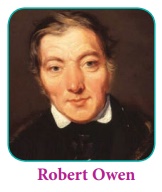
Poor Laws: In Britain the Poor Laws, as codified (1597–98) during Elizabethan
period, provided relief for the aged, sick, and infant poor, as well as work
for the able-bodied unemployed in workhouses.
Pierre-Joseph Proudhon (1809–1865)
Proudhon was a French anarchist who contributed
significantly to the development of socialism. Unlike the earlier Utopian
socialists who were drawn from the middle class, he belonged to the working
class. Drawing inspiration from the cooperative communities, he and other
anarchists were opposed to the state and believed in revolution. In his
pamphlet titled “What is Property?” he wrote that “All property is theft.”
Proudhon believed that labour should be the basis for social organisation and
that all systems of government were oppressive. He wanted to replace
nation-state with federations of autonomous communes. In 1848-49, he was a
member of the National Assembly but was disillusioned by his experience. His
ideas became popular among the working class of France by the middle of the
nineteenth century. In 1864, some of the followers of Proudhon issued the
Manifesto of the Sixty. The manifesto declared that the French Revolution of
1789 only brought about political equality and not economic equality. They
wanted the working class to be represented by themselves. In the 1863
elections, they unsuccessfully sponsored three working class candidates in the
parliamentary elections of France. His views, which influenced the Russian
anarchist thinker Michael Alexandrovich Bakunin, sought to overthrow the state
by a general strike and replace it with democratically-run cooperative groups.
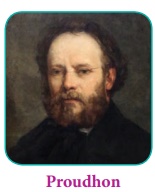
Anarchism: Belief in the abolition of state and organisation of society on a
voluntary, cooperative basis without recourse to force or compulsion
Louis Jean Joseph Charles Blanc (1811-1882)
An influential French socialist, Louis Blanc, in
1839, started the Revue du Progres,a journal of advanced social thought. His most
important essay “Organisation of Labour” serially appeared in 1839. In his
writings, he proposed a scheme of state-financed but worker-controlled “social
workshops” that would guarantee work for everyone and lead gradually to a
socialist society. Louis Blanc argued that socialism cannot be achieved without
state power. In 1848, he became a member of the French provisional government
and was able to influence it to set up workshops for the unemployed and provide
employment to all who needed it.

Karl Marx and Scientific Socialism
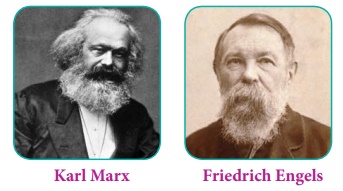
Karl Marx (1818–1883) and Friedrich Engels
(1820–1895) made the most profound contribution to socialism. Eventually their
ideas came to be known as Marxism or Communism. They called their views on
socialism as scientific socialism. On the eve of the 1848 Revolution, Marx and
Engels published The Communist Manifesto. The most famous rallying cry
in this famous work is: “Workers of
the world, unite! You have nothing to lose but your chains.”
Marx believed that in just the same way as
capitalism replaced feudalism, so socialism would eventually replace
capitalism. Marx built his theory on a belief that there is a conflict of
interests in the social order between the prosperous employing classes of
people and the employed mass. With the advance in education, this great
employed mass will become more and more class-conscious and more and more firm
in their antagonism to the class-conscious ruling minority. In some way the
class-conscious workers would seize power, he prophesied, and inaugurate a new
social state.
In 1867 Marx published the first volume of Das Kapital, a critique of capitalism.
In this work, he highlighted the exploitation of the proletariat (the working
class) by the bourgeoisie (the capitalist class).
The International Working Men’s Association,
founded in 1864, was influenced by his ideas. Its purpose was to form an
international working class alliance. Marx worked hard to exclude the moderates
from the International and denounced other socialists such as Ferdinand
Lassalle and Bakunin. Despite his efforts to consolidate the International it
declined by 1876. However, many socialist parties emerged in Europe: the German
Social Democratic Party in 1875, the Belgian Socialist Party in 1879, the Paris
Commune, 1871 and the establishment of a socialist party in 1905. The Second
International was founded in Paris in 1889 which influenced the socialist
movement till the outbreak of the First World War.
Chartism in England
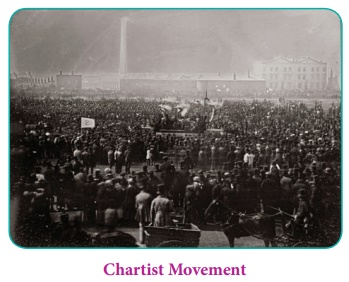
In England the working class lined up behind the
Chartist movement. The Chartist movement was not a riot or revolt. It was an
organised movement. The impact of 1830 French Revolution in England was the
outbreak of militant labour agitation. Different streams of agitation converged
to give rise to the Chartist movement. The chartists propagated their ideas
through newspapers such as The Poor Man’s
Guardian, The Charter, The Northern Star and The Chartist Circular. Its principal
paper, the Northern Star, founded in
1837, soon equalled the circulation
of the Times. Articles published in
the Northern Star were read out for
the illiterates in workshops and pubs in every industrial area.

Hundreds of thousands of workers attended mass
meetings held The during1838–39. People's Charter, prepared by William Lovett
of the London Working Men’s Association, detailing the six key points that the
Chartists believed were necessary to reform the electoral system, was presented
and deliberated in these meetings. The six key points were:
·
Universal suffrage.
·
Voting by ballot, to prevent intimidation.
·
No property qualification for candidates.
·
Payment of members elected to the House of Commons,
as it would enable the poor people to contend for office and contest elections.
·
Equal electoral districts and equal representation.
·
Annual parliaments.
Panicked by rumours that there would be a popular uprising, the government sent the army to the industrial areas. In 1842 the workers struck work in Lancashire and marched from factory to factory stopping the work, and extending and intensifying their action. In 1848, in the wake of a wave of revolutions that swept Europe, subsequent to the February Revolution of that year in France, masses of workers prepared again for confrontation. The state stood firm with the backing of the lower middle class. The Chartist leaders also vacillated, when the 50,000 strong crowd at Kennington, south London, began to melt away. In the meantime the government arrested most of them and turned half of London into an armed camp.
Chartism comprised a mixture of different groups
holding different ideas. Its leaders were divided between those who believed in
winning over the existing rulers, and those who believed in overthrowing them.
Though Chartism was not successful, its main demands, which were not conceded
in the 1832 Reform Act, were later incorporated in the Parliamentary Reform
Acts of 1867 and 1884.
July Revolution (1830)
On 26 July 1830, the Bourbon king Charles X issued
four ordinances dissolving the Chamber of Deputies, suspending freedom of the
press, modifying the electoral laws so that three-fourths of the electorate
lost their votes, and calling for new elections to the Chamber. In protest, the
Parisian masses took to the streets for the first time since 1795. The royal
forces were unable to contain the insurrection. Charles X was advised to go
into exile and put in his place, a relative, Louis Philip of Orleans who had
the backing of the middle class. The tactics worked in France. But in other
parts of Europe there arose a number of risings. The revolution was successful
in the Netherlands, where Belgium was separated to form an independent state.
The Greeks, who had been fighting for independence from Turkish rule, attained
independence in 1832, with the support of the Great Powers. But the revolt of
Poles against the Russian Tsar was suppressed.

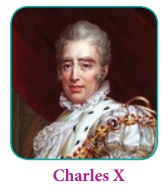
February Revolution (1848)
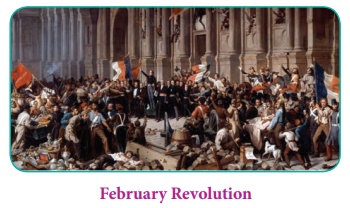
The French King, Louis Philippe, had to abdicate
and flee the country in February, 1848, when there was a spontaneous rising in
Paris. Crowds chanting “Vive de la reforme,” an expression in French to show
patriotism, stormed into the lines of troops and swarmed through the palaces
and the assembly buildings. The opposition rallied behind the French
revolutionary poet Lamartine. Louis Blanc also joined. In the elections held in
April 1848, on the basis of universal manhood suffrage, the moderates were
elected in large numbers. Only a few socialists were elected. The newly elected
Assembly decided to shut down the workshops that had been started at the
initiative of Louis Blanc, as the workshops were seen as a threat to social
order. The workers retaliated and braved the government repression. Between
June 24 and 26, thousands of people were killed and eleven thousand
revolutionaries were imprisoned or deported. The period came to be known as the
bloody June days. The Constituent
Assembly drafted a new constitution based on which elections were held. Louis
Napoleon, the nephew of Napoleon Bonaparte, was elected President in December
1848. Before long, in January 1852, he crowned himself as the Emperor by
holding a plebiscite. He assumed the title Napoleon III.
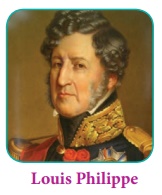
The year 1848 was one of the distinct triumphs for
nationalism. Metternich, the arbiter of Europe and enemy of nationality, was
forced to leave Vienna in disguise. Hungary and Bohemia both claimed national
independence. Milan expelled the Austrians. Venice became an independent
republic. Charles Albert, King of Sardinia, declared war against Austria.
Absolutism seemed dead for a while. But it was not to be. By the summer, the
monarchs had begun their attacks on the revolutionaries and succeeded in
crushing the democratic movements in important centres like Berlin, Vienna and
Milan. In the space of a year counter-revolution was victorious throughout the
continent.
Nationalism in southern and eastern Europe
In Europe the countries that first achieved
national unity were France, Spain and England. Italy which had made rich
contributions to art and letters was not part of this political change. Cities
in Italy like Rome, Florence, Venice, Naples and Milan were the capitals of
small states. Hence she became the prey of powerful kingdoms. Besides, the age
of Renaissance was an age of intellectual liberty and certainly not an age of
political liberty. The petty states of Italy, though enlightened in many ways,
were mostly governed by tyrants, such as the Medici in Florence, the cruel
Visconti in Milan and Caesar Borgia in central Italy. What was true of Italy
was true of Germany. The Holy Roman Empire was an empire only in name. In
practice, Germany contained three of four hundred separate States. It was their
kings who saved these countries from feudal anarchy and made them into nations.
Conditions suitable for the rise of Italy and Germany as nation states
developed only in the nineteenth century with the spread of nationalism.
Unification of Italy
Italy before Napoleon’s time was a patchwork of
little states and petty princes. Under Napoleon Italy had been reduced to three
political divisions. This step towards unity was destroyed by the Congress of
Vienna. Eight states were set up and the whole of Northern Italy was handed
over to the German-speaking Austrians. Italy in the nineteenth century was a
‘patchwork of about a dozen large states and a number of smaller ones.’
Metternich described Italy as “a mere geographical expression.” The empire of
Piedmont-Sardinia, in the northwest, bordering France, played a central role in
unifying Italy. To its east Lombardy and Venetia were under the control of the
Austrian Empire. It also controlled a few smaller states such as Tuscany, Parma
and Modena. The Papal States were located in the middle under the control of
the Roman Catholic Church. In the south was the Kingdom of the two Sicilies or
Naples and Sicily was under the control of a family of Bourbon dynasty.
The Napoleonic rule, for the first time, provided
Italy with a sense of unity through uniform administration. The nationalistic
aspirations of the Italians were dashed when the Congress of Vienna restored
the old monarchies in the various Italian principalities. The 1820s witnessed
the mushrooming of several secret societies such as the Carbonari, advocating liberal and patriotic ideas. They kept alive
the ideas of liberalism and nationalism. Revolts broke out in Naples, Piedmont
and Lombardy. However, they were crushed by Austria.
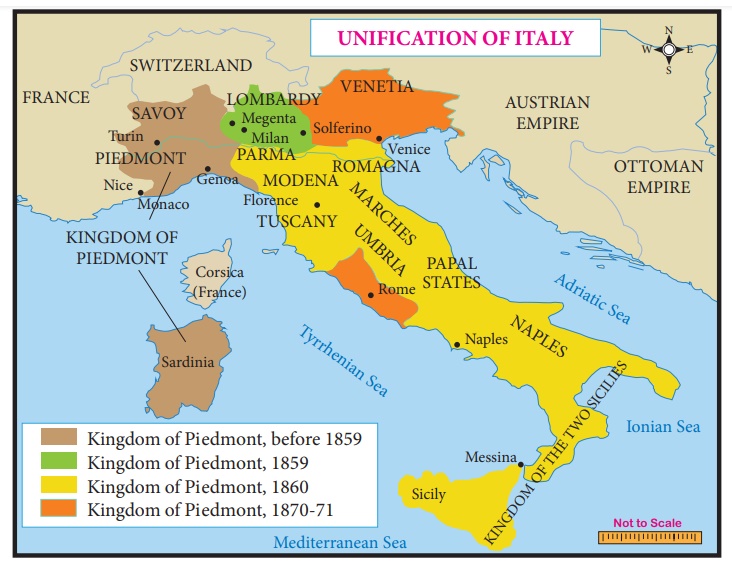
In the wake of the 1830 Revolution in France,
similar rebellions broke out in Modena, Parma and Papal States which were again
crushed by Austria. In 1848, following the February Revolution in France, the
people again rose in revolt in several Italian states including
Piedmont-Sardinia, Sicily, Papal States, Milan and Lombardy and Venetia. As a
result liberal constitutions were granted in Sicily, Piedmont Sardinia and the
Papal States. King Charles Albert of Piedmont-Sardinia, under the influence of
the Revolution, invaded Lombardy and Venetia. However, the Austrians defeated
him with the help of Russian troops. Charles Albert saved Piedmont-Sardinia
from Austrian occupation by taking the blame upon himself for the war and
abdicated in favour of his son Victor Emmanuel II. However, despite the defeat
of Pidemont-Sardinia and the suppression of revolution in various Italian
principalities, liberal and nationalistic ideas survived.
Mazzini, Count Camillo di Cavour, and Giuseppe Garibaldi
were the three central figures of the unification of Italy. Cavour was
considered the brain, Mazzini the soul and Garibaldi the sword-arm of Italian
Unification.
Mazzini (1805–1872)
Giuseppe Mazzini laid the foundations of the
Italian unification. Born in Genoa in a well-to-do family, he graduated in law.
Attracted to politics at a young age, he advocated the freedom of the Italian
nation. He involved himself in the insurrectionary activities of the Carbonari
for which he was arrested. He soon gave up the idea of secret plotting and
began to believe in open propaganda against monarchy. He believed that Italy
was a great civilisation that could provide leadership to the rest of the
world. He started the Young Italy movement in 1831 with the aim of an Italian
Republic. Exiled for working for the cause of unification of Italy in 1848,
when revolts were breaking out all over North Italy, Mazzini returned to Rome.
The Pope was driven away and a republic declared under a committee of three, of
which Mazzini was a member. But with the failure of 1848 Revolution and the
restoration of Rome to Pope with the support of the French, Mazzini carried on
his work by propaganda and preparing for the next programme of action.
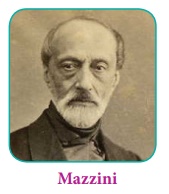
Count Cavour (1810–1861)
Count Cavour was one of those inspired by the idea
of Italian nationalism. In 1847 he started a newspaper. The Italian unification
movement came to be known after the name of the newspaper as Il Risorgimento.
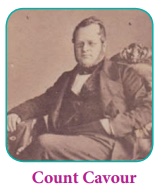
The Risorgimento (the resurrection of Italian spirit) was an ideological and literary movement that helped to arouse the national consciousness of the Italian people. Cavour rose to become the Prime Minister of Sardinia and played a crucial role in the unification of Italy. He used a combination of diplomacy and war to achieve the unification under the leadership of Sardinia. Cavour realised that Italian unification could not be achieved without international support. He needed the support of other Great powers to expel Austria from Lombardy and Venetia. Therefore, he involved Piedmont-Sardinia in the Crimean War to draw international attention and get the support of England and France. In July 1858, he struck an agreement with Napoleon III of France who offered to support Piedmont-Sardinia in its conflict with Austria.
War with Austria, 1859
Cavour then provoked war with Austria by mobilising
troops near the Austrian border. When Austria issued an ultimatum to disband
the troops he allowed it to expire. As a result Austria attacked
Piedmont-Sardinia in April 1859. The combined armies of Piedmont-Sardinia and
France defeated the Austrian armies. They won a major victory at the Battle of
Solferino. Instead of continuing the war, Napoleon III of France concluded a
peace agreement with the Austrian Emperor Francis Joseph II at Villa Franca on
11 July 1859. Cavour was disappointed at French withdrawal and resigned. In
November 1859, Piedmont-Sardinia and Austria concluded the Treaty of Zurich.
Austria ceded Lombardy but retained control over Venetia.
Cavour was reappointed as Prime Minister in 1860.
Parma, Modena and Tuscany were merged with the Kingdom of Piedmont-Sardinia
through plebiscites. Similarly, Savoy and Nice were annexed to France on the
basis of plebiscites.
Garibaldi and the Conquest of Southern Italy
Giuseppe Garibaldi (1807–1882) played a key role in
the unification of Italy by waging guerilla warfare. He joined Mazzini’s Young
Italy and was influenced by his ideas. Participating in Mazzini’s rebellion in
Piedmont, he then fled to South America as an exile. He took up the cause of
revolutionaries there and fought for the cause of Rio Grande and Garibaldi
Uruguay against Argentinian occupation. Therefore, he was called the ‘Hero of
Two Worlds’. In 1843, he started the Italian Legion. This force of volunteers
came to be known as the Red Shirts.
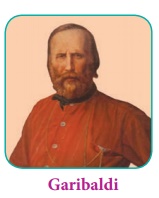
Garibaldi accepted the invitation of the people of
Sicily in their revolt against their monarch. He left the port of Genoa with
1000 volunteers to Sicily. Landing unnoticed on the coast of Sicily he and his
volunteers defeated the 20000 strong Neapolitan (Naples) troops without any
loss of life. He then crossed into Naples and defeated the royal troops with
the help of the locals. However, Cavour, suspicious of Garibaldi’s triumphant
march, sent the Piedmontese force to stop him from invading Rome. Garibaldi
submitted his conquest to King Victor Emmanuel II and retreated to lead the
rest of his life in his home at the island of Caprera.
Plebiscites held in Sicily, Naples and Papal States
led to their merger with Piedmont-Sardinia. At the end of the war, Austria
retained control over Venetia and Pope held Rome. The rest of Italy was unified
under Piedmont. In May 1861, King Victor Emmanuel II was proclaimed by the
Parliament as the ruler of Italy. During the Austro-Prussian War in 1866, Italy
had allied itself with Prussia and was rewarded with Venetia. In 1871, Italy took
advantage of the Franco-Prussian War to annex Rome as the French forces
withdrew. Thus, the Italian Unification was completed.
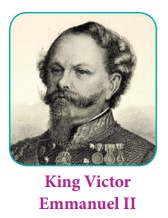
Unification of Germany
In spite of a common language and many other common
features the German people continued to be split up into a large number of
States. Intellectuals such as Johann von Herder (1744–1803) and Friedrich
Schlegel (1772–1829) promoted the idea of German nation by glorifying its past.
Herder believed that civilisation was a product of the culture of the common
people, the Volk (folk) and promoted
the idea of a unique German spirit,
the Volkgeist. J.G. Fichte (1762–
1814) delivered a series of Addresses to
the German Nation. He claimed the
German spirit was not just one among
the many spirits but was superior to the rest. This inspired and promoted the
idea of nationalism among the Germans.
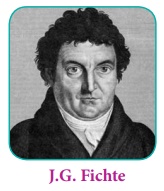
Before Napoleon Germany consisted
of about 360 principalities. Napoleon unconsciously gave an impetus to the
spirit of nationalism by forming a Confederation of the Rhine. For the first
time, it gave a sense of unity to Germany. However, the Congress of Vienna,
which transformed it into the German Confederation consisting of 39 states,
placed it under the control of Austria.
At the time of Fichte’s addresses Austria was
occupying the territories of Prussia, the largest and the most powerful of the
Confederation of German States. It kindled in Prussia the spirit to achieve its
past glory. It rebuilt and strengthened its army. Recruitment was based on
merit and not on old aristocratic standing. The zeal for liberalism and
modernisation combined with nationalism in Prussia.
In 1834, Prussia was successful in establishing the
Zollverein (customs union). By the
1840s it included most of the Germanic states except those under the control of
Austria and provided economic unity to the Germanic states. In 1848, popular
pressure led to the introduction of an elected legislative assembly.
In the same year the Frankfurt Assembly was
convened. Most of the elected members were liberals who believed that a liberal
national-German state could be created. They were divided on the question of
what constituted the German nation. The delegates who demanded ‘Great Germany’
believed that the German nation should include as many Germans as possible
including Austria except Hungary and the crown should be offered to the
Austrian Emperor. Some delegates put forward the idea of ‘Little Germany’ which
argued that Austria should be excluded from the German nation and the crown be
offered to King of Prussia. Eventually Austria withdrew from the Assembly. A
constitution was framed by the Assembly and the Little Germans offered the
constitutional monarchy to King Frederick William of Prussia. However, the
latter declined it as he did not want to accept the revolutionary notion of the
Assembly offering the crown to him.
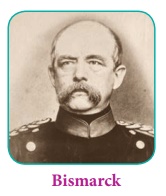
Otto von Bismarck, Chancellor Prussia, transformed
it into a powerful state with the objective of uniting the Germanic states
under its leadership. He adopted a ‘blood and iron’ policy to achieve the
unification. He realised that the unification of Germany was not possible
without an armed conflict with Austria and France. He sparked conflict with
Austria and France through diplomatic moves. Bismarck opened negotiations with
Russia and ensured Russian neutrality in the event of a conflict between
Prussia and Austria. Bismarck had to fight three wars to achieve the
unification of Germany.
Bismarck remarked: Not through
speeches and resolutions of
majorities will the mighty problems of the age be solved, but by blood and
iron.
Schleswig–Holstein Question
Schleswig and Holstein were Germanic States under
the control of Denmark. In 1863, the King of Denmark merged these two duchies
into his kingdom. Bismarck proposed to Austria a joint action against Denmark.
In 1864, the joint forces of Prussia and Austria defeated Denmark. By the
Treaty of Vienna, Denmark surrendered the duchies to Prussia and Austria.
Differences arose on the fate of the Schleswig and Holstein. While Austria
wanted them to be made part of the German Confederation, Bismarck wanted to
administer them separately. By the Convention of Gastein in 1865 it was agreed
that Holstein would be under the control of Austria and Schleswig under the
control of Prussia. Holstein had a large German population and was located
within Prussian territory making it difficult for Austria to administer it.
When Austria decided to refer the matter to the Diet of the German
Confederation, it violated the Convention of Gastein. Bismarck ordered the
Prussian troops to occupy Holstein.
Austro–Prussian War of 1866
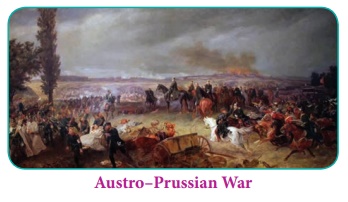
By his diplomacy Bismarck had ensured the
neutrality of Russia and France. He also got the support of Piedmont-Sardinia
which wanted to drive Austria out of Venetia. Thus ensuring that Austria would
not receive support from any major power, he forced Austria to attack Prussia.
The Austro-Prussian war is also known as the Seven Weeks’ War. Prussia defeated
Austria at the Battle of Sadowa or Konnniggratz in Bohemia. While the Prussian
army wanted to march into Austria and capture Vienna, Bismarck opposed it. The
war was brought to an end by the Treaty of Prague. Austria withdrew from the
German confederation. The northern states were formed into a North German
Confederation under Prussia. Though defeated, Italy was rewarded with Venetia
for its support to Prussia. The North German Confederation consisted of 22
states north of river Maine. A new constitution came into effect on 1 July
1867. Bismarck followed a friendly policy towards the southern states in an
attempt to win them over.
Franco–Prussian War of 1870–71
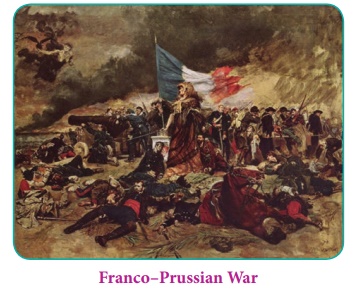
Bismarck next turned his attention to create a rift
between Prussia and France to unite the southern German states. The opportunity
came over the issue of succession to the Spanish throne. After a revolution in
Spain which drove Queen Isabella out of the country, the throne was offered to
Prince Leopold, a relative of the King of Prussia. France was agitated over the
issue. A threat of war was averted when Prince Leopold declined the offer.
Bismarck was disappointed.
However, a new opportunity arose when Gramont, the
French Foreign Minister met the King of Prussia in Ems. He demanded that
Prussia promise that it would not claim the throne of Spain in the future. The
Prussian King sent a telegram about the discussion to Bismarck. He edited it in
such a manner that the French thought their ambassador had been insulted while
the Prussians thought that their king had been humiliated. The Ems telegram
triggered the Franco-Prussian War.
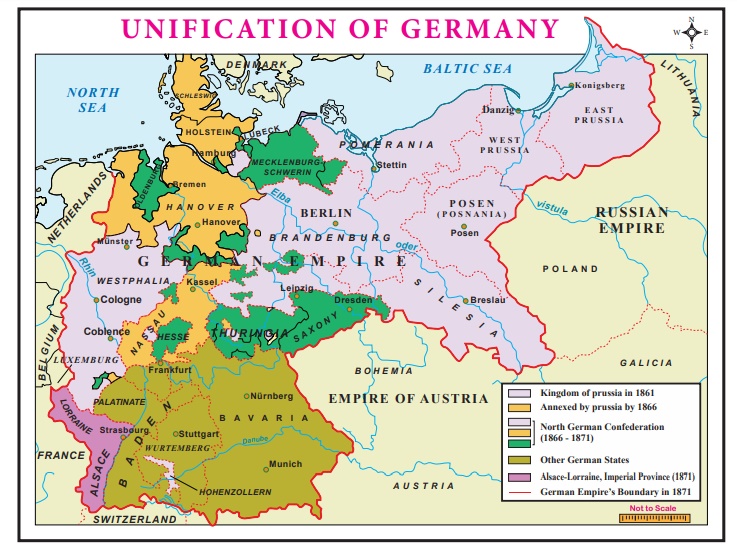
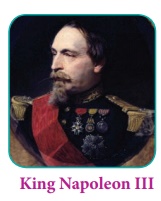
France declared war on Prussia. In the Battle of
Sedan (2 September 1870) France was defeated. French King Napoleon III
surrendered. Bismarck however continued his march to Paris and captured it. The
war was brought to an end by the Treaty of Frankfurt in 1871. Bismarck imposed
harsh terms on France. France ceded Alsace-Lorraine and agreed to pay a huge
war indemnity. At the Versailles Palace, King William I of Prussia was declared
the Emperor of Germany which combined both the North German Confederation and
the southern states. Thus, the Unification of Germany was achieved by a
combination of diplomacy and warfare.
The Founding of the Third Republic in France
After the Battle of Sedan Napoleon III was
overthrown by a group of republicans in Paris. A provisional government was set
up to rule the country until a new constitution could be drafted. Elections
were held in February 1871 for a National Constituent Assembly. A majority of
the members were monarchists. It is not that the French people preferred a
monarchy, but rather that they longed for peace. The monarchists were
hopelessly divided and hence for almost four years a definite decision as to
the form of government could not be taken. Finally, in January 1875, the
National Assembly decided on a republican form of government. This signaled the
establishment of the Third Republic in France.
Paris Commune, 1871
In its bid to exact huge financial payment and to
possess French Alsace and Lorraine to Prussia, the Prussian army besieged
Paris. Paris held out through five months of siege in conditions of incredible
hardship with people starving and without fuel to warm their homes in winter.
Workers, artisans and their families bore the full brunt of the suffering as
prices soared. The Parisians grew bitter when bigger numbers of monarchists
were returned to the National Assembly. Then came the betrayal of the republic
– the appointment of 71-year-old Thiers. Paris was once again armed. As the
regular army had been disbanded under the terms of agreement with Prussia, the
Parisian masses kept their arms. Along with National Guards, now overwhelmingly
a working class body, they surrounded the soldiers. One of the generals,
Lecomte, gave orders to shoot at the crowd three times. But the soldiers stood
still. The crowd fraternised with the soldiers and arrested Lecomte and his
officers. That day Thiers and his government fled the capital. One of the
world’s great cities was in the hands of armed workers.
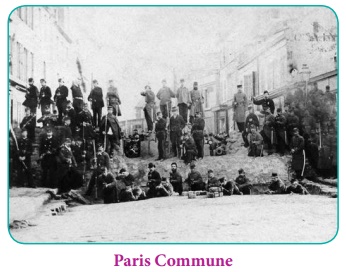
The Commune set about implementing measures in
their interests – banning night work in bakeries and handing over to
associations of workers any workshops or factories shut down by their owners,
providing pensions for widows and free education for every child, and stopping
the collection of debts incurred during the siege. In the meantime, the
republican government was organising armed forces to suppress the commune. It
succeeded in persuading Bismarck to release French prisoners of war. It
gathered them in Versailles, together with new recruits from the countryside.
Both the Central Committee of the National Guard and the Commune were composed
of Blanquists and Proudhanists. Marx could not influence events in Paris. Soon
the defeat of Commune was achieved by Thiers. Thereafter there was an orgy of
violence. Anyone who had fought for the Commune was summarily shot. Troops
patrolled the streets picking up poorer people at will and condemning them
death. It is estimated that between 20,000 and 30,000 were killed. Of the
40,000 communards (members of the commune) arrested, 5000 of them were
sentenced to be deported and another 5,000 to imprisonment.
Karl Marx had this to say on the Commune: “It
represented the greatest challenge the new world of capital had yet faced and
the greatest inspiration to the new class created by capital in opposition to
it.”
The Long Depression (1873–1896)
The world witnessed an unprecedented economic boom
during 1865–1873. The unification led to a phenomenal boom in Germany between
1870 and 1873. During this period 857 new companies were established. It was
unparalleled in the history of Germany. The railway system almost doubled in
size between 1865 and 1875. Tens of thousands of Germans invested in stock for
the first time to demonstrate both their patriotism and their faith in the
future of the new German Empire.
After the end of Civil War, the United States too
underwent an economic transformation, marked by the proliferation of big
business houses, and the massive development of agriculture attended with the
rise of national labour unions. The period from the 1870s to 1900 in the USA
came to be called the Gilded Age. The rapid expansion of industrialisation led
to a real wage growth of 60% between 1860 and 1890. The average annual wage per
industrial worker (including men, women, and children) rose from $380 in 1880
to $564 in 1890. However, the Gilded Age was also an era of abject poverty and
inequality, as millions of immigrants – many from impoverished regions – poured
into the United States. The high concentration of wealth in a few hands was
becoming more visible.
Then came the Depression. It was signalled by the
collapse of the Vienna Stock Market in May 1873. The Depression was world-wide
and lasted till 1896, and is referred to as the Long Depression. It affected
Europe and the US very much. American railroads became bankrupt. German shares
fell by 60 percent. Agriculture was most affected, as there was a fall in
prices. Many countries responded by imposing protective tariffs to prevent
competition.
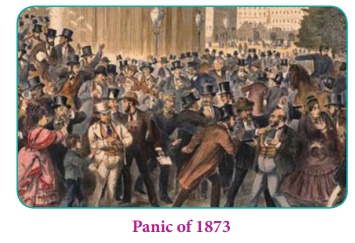
The Gilded age was also an era of intense mass
mobilisation of working classes. Socialist and labour movements emerged in many
countries as a mass phenomenon. When industrial capitalism was at its peak in
the US, nearly 100,000 workers went on strike each year. In 1892, for example,
1,298 strikes involving some 164,000 workers took place across the nation.
Trade Unions, aiming at protecting workers’ wages, hours of labour, and working
conditions, were on the rise.
Capitalists who could not reconcile to the rise of
trade unions launched a counter offensive. The socialists suffered
persecution.The strike at the Carnegie Steel Company’s Homestead Steel Works in
1892 culminated in a gun battle between unionised workers and men hired by the
company to break the strike. The state supported the company management and as
a result the steelworkers ultimately lost the strike. The Pullman Strike of
1894, a national railroad strike, involving the American Railway Union, was
smashed by armed police and Pinkerton private detectives were hired by the
employers to shoot down strikers.
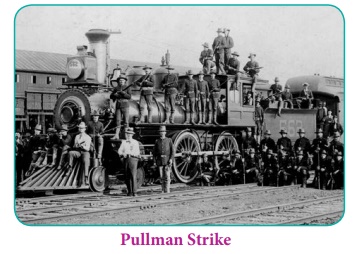
In Germany, the Socialist Democratic Party (SDP)
emerged as a popular party. However, Bismarck introduced anti-socialist
legislations to check the growth of socialism. Despite this support for the
party grew. With the repeal of the anti-socialist laws after 1890, socialist
trade unions were able to function openly. SDP’s share of Reichstag seats
increased from 3 percent in 1887 to 20 percent in 1903.
In Britain, in the 1880s, the famous Match Girls
Strike by the women and teenage girls working in Bryant and May Match Factory
ended in the victory of strikers. There was also a dock strike (1889) in the
port of London. Cardinal Manning intervened and mediated on behalf of the
strikers with the dock owners. But, in the 1890s, British employers, following
the examples of their counterparts in the US, also destroyed many of the new
unions through professional strike breakers, starving people back to work,
lockouts and the like.
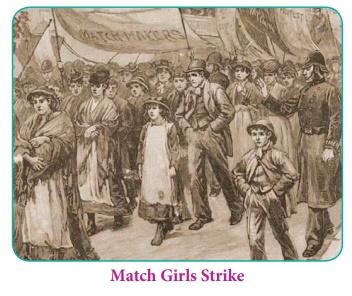
Related Topics